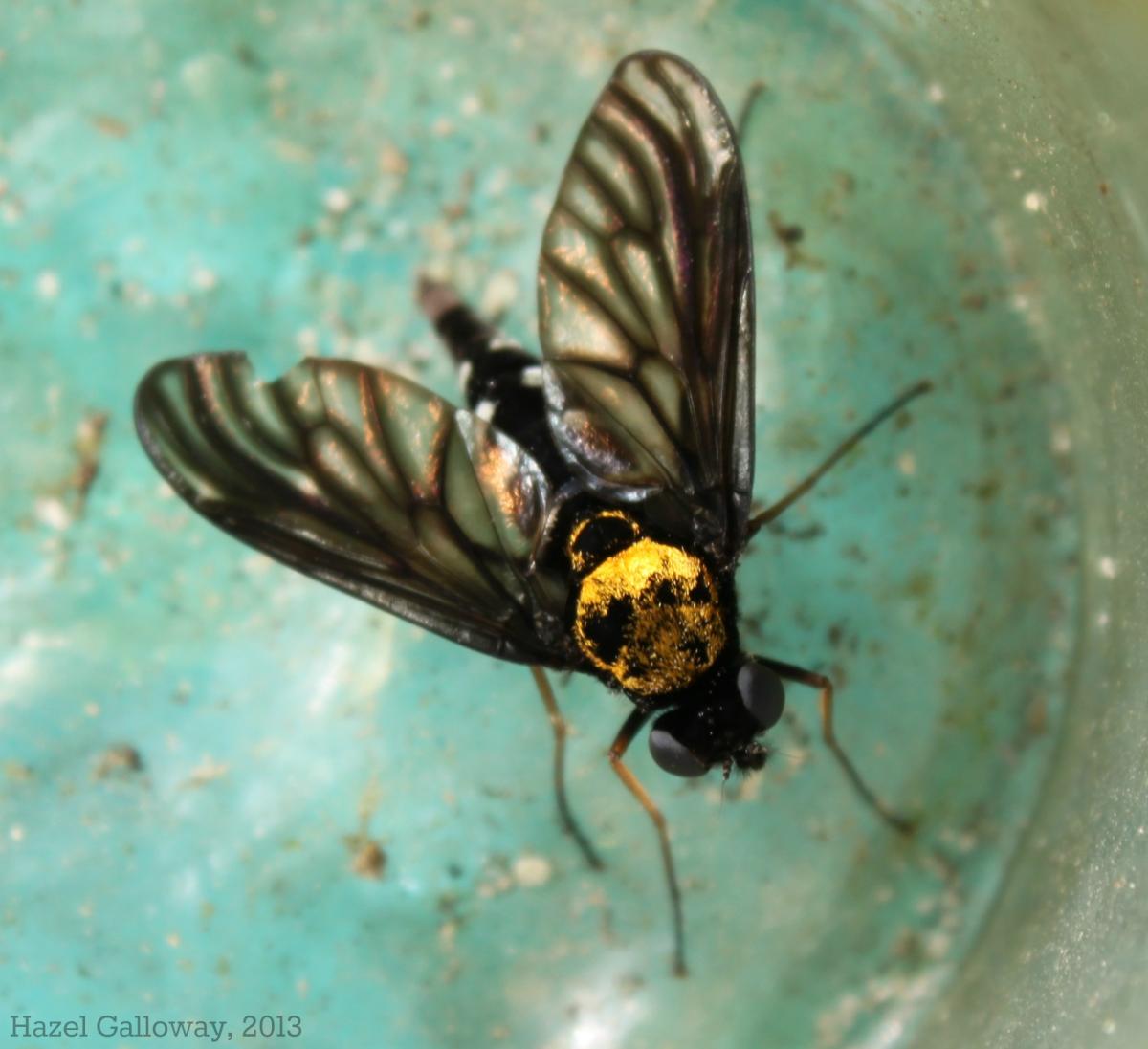 Unlike the personable green frog or black bear, small but beautiful insects like the golden-backed snipe fly have not attracted the extensive attention of natural historians. Little is known about their life cycle or their habits. While more may be said of snipe flies in general (the family Rhagionidae), the information is far from complete.
Unlike the personable green frog or black bear, small but beautiful insects like the golden-backed snipe fly have not attracted the extensive attention of natural historians. Little is known about their life cycle or their habits. While more may be said of snipe flies in general (the family Rhagionidae), the information is far from complete.
This species of fly is one of around 120,000 members worldwide of the order Diptera, or true flies. Snipe flies tend to be large flies with long legs relative to their body size, rounded heads, and tapering abdomens. C. thoracicus is marked by smoky wings with dark veins on a translucent membrane. Its most distinctive feature is the patch of brilliant gold hair positioned on the upper thorax. One feature that distinguishes it from other species in the same genus is the presence of a light “stripe” along the edge of each abdominal segment; however, these are interrupted in the middle and do not continue all the way across the body. As with most insects, the females of this species are much more robust than the males. Both sexes commonly reach 10-12 mm in length.
Golden-backed snipe flies can be found throughout eastern North America, and are most often observed resting on low vegetation in deciduous woodlands. They appear in the late spring and early summer, and have been observed mating in late May and early June, although timing likely varies across their range. The vast majority of dipterans lay eggs which hatch into tiny larvae, lacking true thoracic legs. Although nothing is known about the life cycle of this species, the larvae of flies in the same family are known to develop in rotting wood or moist soil (or occasionally in aquatic environments), feeding on small insects. Most dipteran larvae undergo at least one molt before pupating. Adult snipe flies are typically predatory on other insects, although some members of the family do feed on human or other mammal blood. It is thought that C. thoracicus is in the predatory class, although they have been observed to eat little.
Both of these specimens are females, as can be deduced from their large, robust bodies and relatively small eyes (males’ eyes are much larger than females’). They were found by Vince outside Bannister, resting on ferns.
Article by Hazel Galloway
Sources:



